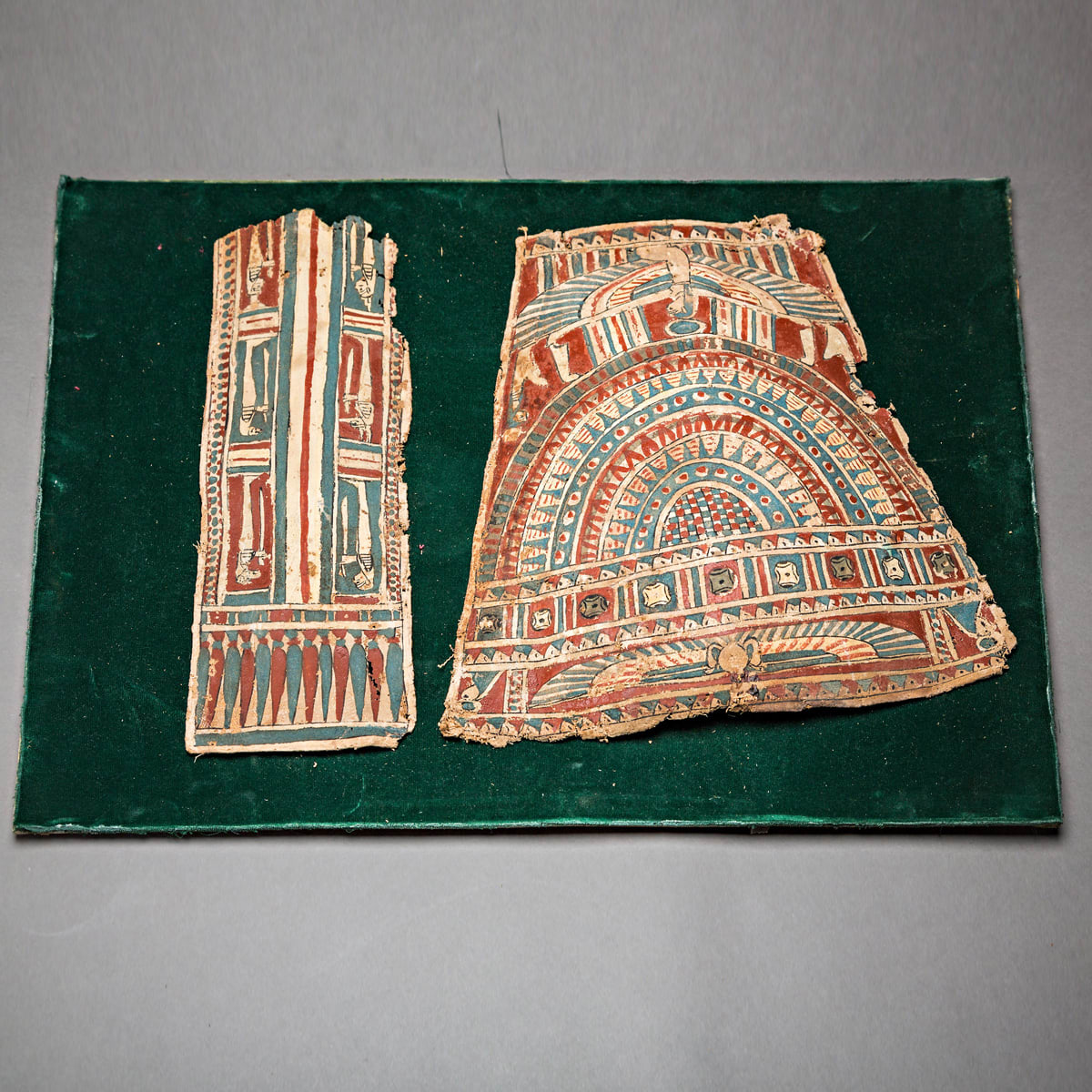Two Panels from a Cartonnage Mummy Ensemble, 664 BCE - 525 BCE
Cartonnage
X.0378
The 26th Dynasty, also known as the Saite Period, is traditionally placed by scholars at the end of the Third Intermediate Period or at the beginning of the Late Dynastic...
The 26th Dynasty, also known as the Saite Period, is traditionally placed by scholars at the end of the Third Intermediate Period or at the beginning of the Late Dynastic Period. In either case, the Saite Period rose from the ashes of a decentralized Egyptian state that had been ravaged by foreign occupation. Supported by the assistance of a powerful family centered in the Delta town of Sais, the Assyrians finally drove the Nubians out of Egypt. At the close of this campaign, Ashurbanipal’s kingdom was at the height of its power; however, due to civil strife back east, he was forced to withdraw his forces from Egypt. Psamtik I, a member of the family from Sais, seized this opportunity to assert his authority over the entire Nile Valley and found his own dynasty, the 26th of Egyptian history. Known as the Saite Period due to the importance of the capital city Sais, the 26th Dynasty, like many before it, sought to emulate the artistic styles of past pharaohs in order to bolster their own claims to power and legitimize their authority.
The preservation of the physical remains of the deceased was an essential aspect of Egyptian funerary practices. As mummification techniques became more and more advanced over time, so did the cartonnage coffins become more and more elaborate. The cartonnage was manufactured by putting several layers of linen (or, much later, papyrus) on top of each other and molding it into a human form with the help of a cast. Finally, the surface of the cartonnage was painted and decorated in vibrant colors, sometimes including gilding. During the Middle Kingdom, mummy masks were made from plastered linen and became increasingly larger until they covered the entire upper body. Eventually, wooden mummy cases covering the entire body became the standard. However, by the Third Intermediate Period, the use of cartonnage to create these innermost coffins was revived, perhaps because the material lends itself to bright painting. Here, the chest panel and the panel that would have covered the legs have been preserved. The chest panel features a winged sun disc at the top. Below, painted beaded necklaces decorate the panel. At the bottom, a winged, kneeling Isis is present looking towards the right. The leg panel is decorated with the images of the gods of the underworld. The vibrant hues of the original polychrome have been remarkably well preserved. This gorgeous pair of cartonnage mummy decorations reveals that the Ancient Egyptian devoted as much energy to the decoration of the body as they did to its preservation.
The preservation of the physical remains of the deceased was an essential aspect of Egyptian funerary practices. As mummification techniques became more and more advanced over time, so did the cartonnage coffins become more and more elaborate. The cartonnage was manufactured by putting several layers of linen (or, much later, papyrus) on top of each other and molding it into a human form with the help of a cast. Finally, the surface of the cartonnage was painted and decorated in vibrant colors, sometimes including gilding. During the Middle Kingdom, mummy masks were made from plastered linen and became increasingly larger until they covered the entire upper body. Eventually, wooden mummy cases covering the entire body became the standard. However, by the Third Intermediate Period, the use of cartonnage to create these innermost coffins was revived, perhaps because the material lends itself to bright painting. Here, the chest panel and the panel that would have covered the legs have been preserved. The chest panel features a winged sun disc at the top. Below, painted beaded necklaces decorate the panel. At the bottom, a winged, kneeling Isis is present looking towards the right. The leg panel is decorated with the images of the gods of the underworld. The vibrant hues of the original polychrome have been remarkably well preserved. This gorgeous pair of cartonnage mummy decorations reveals that the Ancient Egyptian devoted as much energy to the decoration of the body as they did to its preservation.
